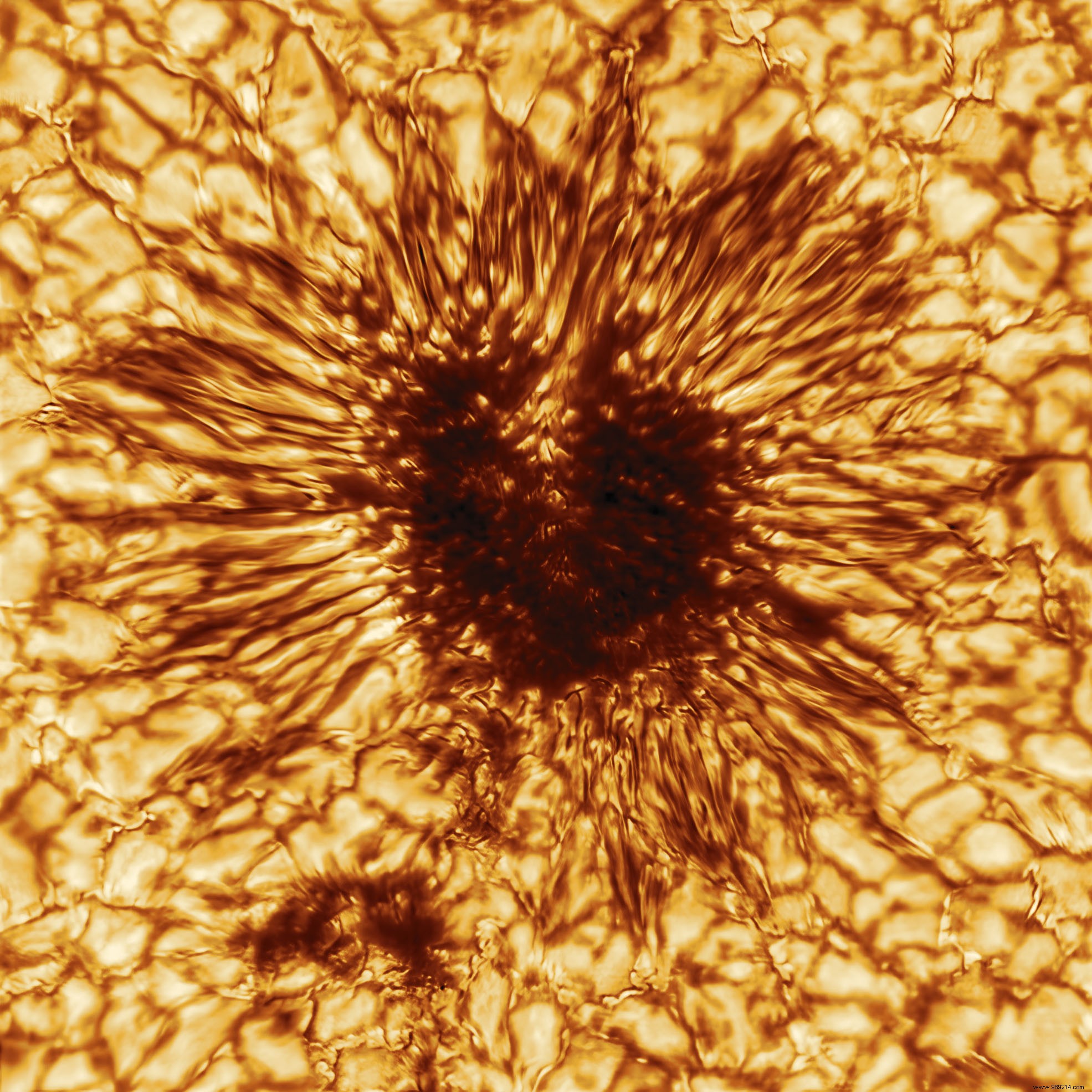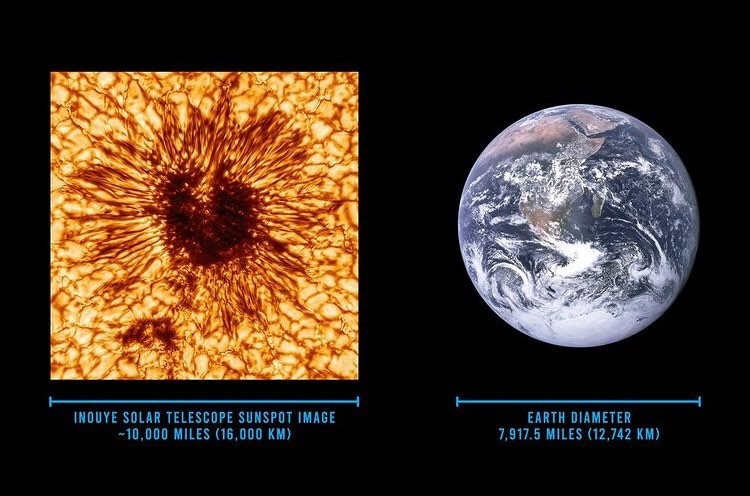Astronomers recently released an incredibly detailed image showing us a huge sunspot as it temporarily darkened the surface of our star. We owe this shot to the Daniel K. Inouye solar telescope, currently in the final phase of testing.
Sunspots appear as dark imperfections on the surface of our star. They form in regions where its magnetic field is particularly strong and inhibit heat input from within the sun, creating "cooler" regions on the surface. The quotes are in order here as these sunspots always reach temperatures of about 4150°C .
To learn more about these sunspots (and other solar activity), the US National Science Foundation (NSF) has been building the Daniel K. Inouye Solar Telescope since 2013, on the Hawaiian island of Maui.
With its primary mirror four meters in diameter, the observatory will soon present itself as the largest solar telescope in the world , capable of offering the spatial, temporal and spectral resolution necessary to measure relatively small magnetic structures (about twenty kilometers in diameter) present both on the surface and in the atmosphere of our star.
The disruptions inherent in the COVID-19 pandemic have caused delays in the construction of the telescope. However, there is still a good chance that the observatory will be operational by the end of 2021. In the meantime, the structure is still in the test phase.
For the occasion, operative astronomers released an incredibly detailed image revealing the structure of a huge sunspot as it temporarily darkened the surface of the sun on January 28, 2020.

To give you an idea of scale, this image covers an area approximately 16,000 km in diameter . In other words, this spot was large enough to contain the Earth and its 12,742 km in diameter . On the other hand, it represents only a fraction of the surface of the sun.
You will also notice some "ridged" structures around this sunspot. These result from the cohabitation of hotter and colder gases shaped by strong magnetic fields from the sun.

Note that this sunspot represents one of the first of the new eleven-year cycle of activity that began a few months ago. Its activity is expected to increase as the sun progresses towards its projected solar maximum in 2025 .
You will find an article detailing the sunspot in detail in the journal Solar Physics.